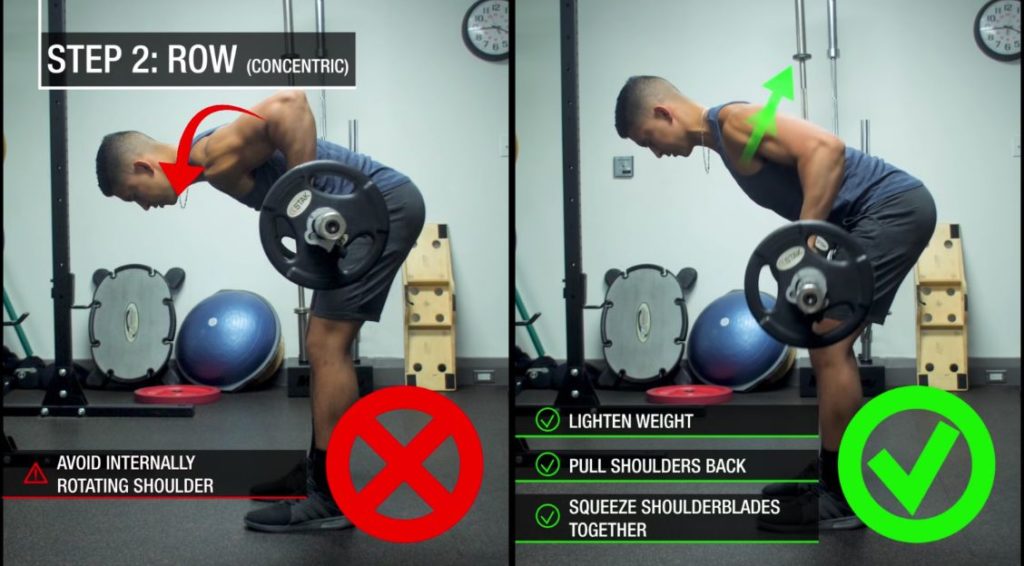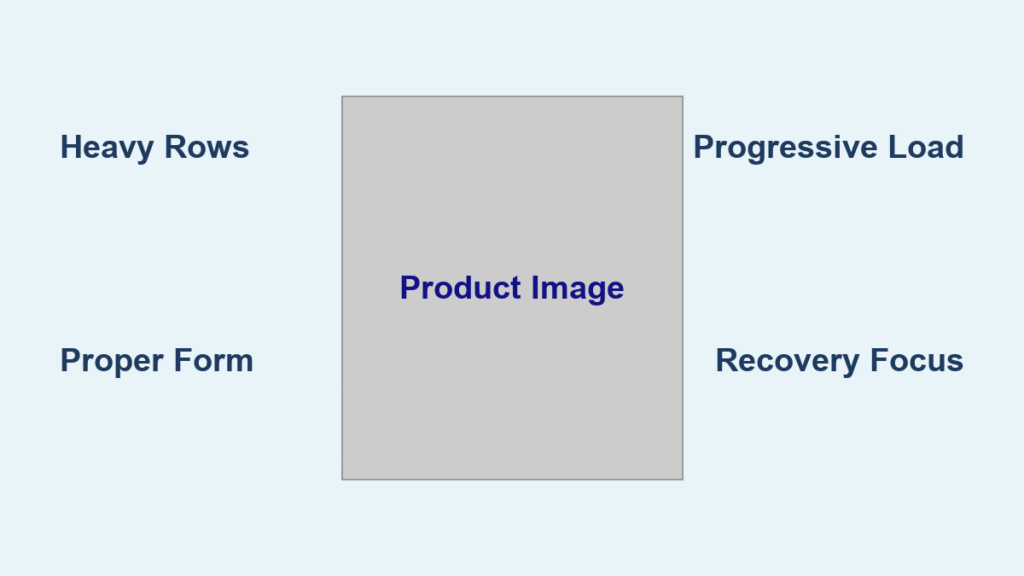Your lats are the secret weapon for that dramatic V-taper physique, yet countless gym sessions leave them underdeveloped. Most lifters rely solely on vertical pulls like pull-ups, missing the horizontal tension that truly expands back width. A strategic barbell lat workout solves this by delivering heavy, progressive loading impossible with cables or machines. Unlike isolated movements, barbell rows engage your entire posterior chain while maximizing mechanical tension on your lats—transforming both strength and aesthetics. In this guide, you’ll discover exactly which barbell variations trigger explosive growth, how to program them for your goals, and critical technique fixes most lifters miss.
Barbell rows dominate lat development because they create horizontal pulling tension that vertical exercises can’t replicate. The bilateral loading allows precise 2.5–5 lb increases week after week—micro-progressions that compound into massive strength gains. Free weights also force your core, glutes, and spinal erectors to stabilize, turning each rep into a full-body power exercise. Your lats respond best to three stimuli: heavy loads, stretch under tension, and controlled eccentrics—all delivered simultaneously in a single barbell row. This movement pattern directly translates to athletic performance in climbing, swimming, and combat sports, making every rep highly functional.
Why Barbell Rows Dominate Lat Development
Horizontal barbell rows uniquely target your latissimus dorsi through shoulder extension—their primary biomechanical function. While pull-downs stretch lats vertically, barbell rows load them horizontally where they generate maximum force. This creates superior mechanical tension for hypertrophy. The barbell’s micro-loadable plates let you incrementally increase weight, ensuring consistent progressive overload without plateaus. You’ll build thicker connective tissue around your shoulder joints, reducing impingement risks while developing the postural strength to counteract desk-hunched posture. For true back width expansion, nothing matches the barbell’s ability to load both sides equally under heavy tension.
Essential Barbell Lat Exercises
Bent-Over Row Foundation
Set up with feet hip-width, bar over mid-foot. Hinge at hips until torso hits 45 degrees above parallel—this angle maximizes lat stretch while protecting your spine. Grip the bar just outside shoulders with palms down. Pull toward your lower sternum by driving elbows back and slightly up, keeping the bar glued to your body. Critical cue: Squeeze shoulder blades together then actively depress them toward your back pockets for complete lat engagement. Control the eccentric for 3 seconds to amplify muscle damage. Use 65–80% of your 1RM for 8–12 reps to build width without compromising form.
Pendlay Row Power
Start with the barbell resting on the floor. Set your torso more horizontal (30 degrees above parallel) with hips higher than knees. Explode upward by driving through your feet, pulling the bar to your upper abdomen in one fluid motion. Reset completely after each rep—no bouncing off the floor. This dead-stop technique builds explosive pulling power that transfers directly to deadlifts and cleans. Pro tip: Keep elbows at 45 degrees to your torso; any wider shifts work to traps. Program with 70–85% of your 1RM for 4–8 reps to forge serious strength.
Seal Row Isolation
Lie prone on a bench elevated high enough for the barbell to clear the floor. Row the bar toward your lower ribs while maintaining strict chest contact with the bench. Pause for 2 seconds at peak contraction, then lower under full control. This eliminates lower back strain and momentum cheating, forcing pure lat activation. Key benefit: You’ll feel the stretch in your lats’ origin points along your spine—critical for width development. Use moderate weight (60–70% 1RM) for 12–15 reps to maximize time under tension.
Programming Your Barbell Lat Workout

Weekly Volume Blueprint
Target 12–20 hard sets weekly across two sessions with 48+ hours recovery. Monday should focus on heavy strength work (Pendlay rows, bent-over rows at 85–90% 1RM), while Thursday emphasizes volume and isolation (seal rows, T-bar rows at 65–80% 1RM). This split prevents fatigue accumulation while maintaining training frequency. Critical mistake to avoid: Doing all lat work in one weekly session—this delays recovery and limits growth stimulus. Always pair barbell rows with vertical pulls like pull-ups on separate days for complete back development.
Loading Parameters by Goal
| Goal | %1RM | Reps | Sets | Rest |
|---|---|---|---|---|
| Strength | 85–90% | 3–6 | 4–6 | 3–4 min |
| Hypertrophy | 65–80% | 8–12 | 6–10 | 90–120 sec |
| Endurance | 50–65% | 12–20 | 3–5 | 45–60 sec |
Progress by adding 2.5–5 lbs when you hit the top of your rep range with perfect form. Never sacrifice technique for weight—if your hips rise or bar drifts away from your body, reduce the load immediately.
Technique Fixes for Maximum Growth

Common Form Errors
- Hip rise during rows: Reduces lat engagement by shifting work to hamstrings. Fix: Reduce weight and consciously lock hips in position before each pull.
- Bar drifting away from body: Turns rows into upright rows, overloading traps. Fix: Pull the bar in a straight vertical line toward your waist, not chest.
- Elbow flare: Engages rear delts instead of lats. Fix: Narrow your grip and drive elbows toward back pockets.
- Upper trap dominance: Causes shrugging. Fix: Depress shoulders toward hips before initiating each pull.
Perfect Rep Execution
- Brace your core like preparing for a stomach punch
- Retract scapulae first (imagine squeezing a pencil between shoulder blades)
- Pull with elbows leading the movement
- Squeeze hard for 1–2 seconds at peak contraction
- Control the negative for 3 seconds to maximize stretch
Sample Workouts for Every Level

Beginner Foundation (Weeks 1-4)
- Bent-over row: 3 sets × 10–12 reps @ 60% 1RM
- Underhand row: 3 sets × 12–15 reps @ 55% 1RM
Focus on tempo: 3-second eccentric, explosive concentric. Rest 90 seconds between sets.
Intermediate Hypertrophy (Weeks 5-8)
- Pendlay row: 4 sets × 6 reps @ 75% 1RM
- T-bar row: 3 sets × 10 reps @ 70% 1RM
- Seal row: 2 sets × 15 reps @ 65% 1RM
Use 2-second pause at top of each rep. Rest 120 seconds.
Recovery and Growth Optimization
Sleep and Nutrition Protocol
Sleep 7–9 hours nightly—growth hormone peaks during deep sleep cycles. Consume 1.6–2.2g protein per kg bodyweight daily, split across 4–5 meals. Maintain a 250–500 calorie surplus during mass phases. Critical timing: Have 20–40g protein within 45 minutes post-workout to maximize muscle repair.
Soft-Tissue Maintenance
Foam roll lats and thoracic spine 2–3 times weekly. Use a lacrosse ball on rhomboids between sets to release tension that limits lat activation. This prevents the rounded-shoulder posture that sabotages your rowing mechanics.
Quick Reference Training Guide
Essential movements: Bent-over row, Pendlay row, Seal row, T-bar row
Weekly structure: 12–14 sets across 2 sessions, 48-hour rest
Progression: Add 2.5–5 lbs weekly or one set every 2 weeks
Safety non-negotiables: Neutral spine, core braced, stop on pain
Master this barbell lat workout system to build wider, thicker lats. The combination of heavy horizontal pulls, precise programming, and flawless technique creates the growth stimulus your back craves. Track every rep, prioritize form over ego lifting, and within 8 weeks you’ll see your back width explode—transforming both your physique and functional strength. Start implementing these protocols today and watch your V-taper emerge.




